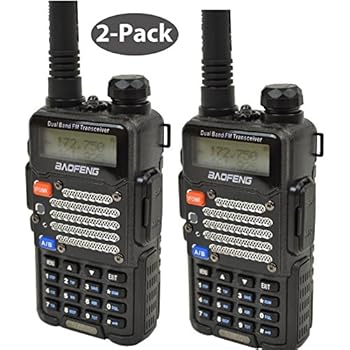Baofeng Uv 5b Software Definition

For Christmas, [Lior] received a Baofeng UV5R radio. He didn’t have an amateur radio license, so he decided to use it as a police scanner. Since the schematics were available, he. This $40 radio communicates on the 136-174 MHz and 400-480 MHz bands. It uses a one-time programmable microcontroller and the RDA1846 transceiver. With the power traces to the MCU cut, [Lior] was able to send his own signals to the chip over I2C using an Arduino.
Install USB Driver software. Yoga Conditioning For Weight Loss Program here. Install Baofeng BF5R UV_5R Radio Programming Software Step 3. Connect USB cable to your PC. BaoFeng Radio. Detail This software is used for UV-5R series, such as UV-5R+, UV-5RA,5RB,5RC. Detail This software is used for UV-3R series and UV-100. Baofeng Firmware Release - Miklor. Outdoors hunting camping SHTF GMRS radio communications antenna battery electronics scanners digital computer software hardware. BaoFeng Radio Programming Software Download Homepage, CHIRP Programming Software. BaoFeng UV-82 and UV-82X Series; BaoFeng BF-F8 and UV-5R Series; Radios.
He also recorded the signals sent by the stock microcontroller during startup, so that he could emulate it with the Arduino. Once communication was working on an Arduino, [Lior] decided to get rid of the stock microcontroller. He desoldered the chip, leaving exposed pads to solder wires to. Hooking these up to the Arduino gave him a programmable way to control the device. He got his radio license and implemented transmission of Morse Code, and an Arduino sketch is available in the write up. [Lior] points out that his next step is to make a PCB to connect a different microcontroller to the device.
This will give him a $40 radio that is fully programmable. After the break, check out a video of the hacked radio in action. Posted in Tagged,, Post navigation. Mitchell On Demand English Keygen Photoshop here. Perhaps type acceptance would be an issue. As hams the FCC does allow us to build or modify our own devices but we aren’t allowed to market them without type acceptance. I’m thinking you would have to take a two-micro approach.
One controls the transmit vfo/power while the other is the user interface. The user-interface one is open and can be hacked at will by the owner. No matter what values it sends on to the transmitter controler micro though it will not do anything outside of certain parameters.
Something I have been thinking about though is an open protocol for controling a radio via computer, micorcontroler, etc As part of the protocol the radio would ‘tell’ the computer what controls it has, what their ranges are, etc It wouldn’e exactly define a user interface but it would tell that this control is volume, this one controls a vfo, etc If connecting to a computer for example, the user’s application could decide how it wants to implement the control. Descargar Driver Mini 123 Flashlight. Maybe volume gets a slider, vfo gets a numeric control, etc Just plug it in and the computer talks to the device then generates an interface to control it. Users could change those defaults then, what kind of control should the vfo use, etc We could use micros, touch panels, rotary encoders etc to design and build our own head units that speak the protocol and work the same way.
Yeah that was kind of my idea, the “radio board” itself would be fixed as a type-accepted radio. The “control board” for it would be open — and basically would send transmit freq, receive freq, PL/DCS tone, etc to the “Radio Board”. The radio could ship from the manufactuter with a basic operating and display program but the user could re-program, create memory arrays, scan routines, etc. Of course the manufacturer could build in a little TNC unit (a la ) and it could be enabled/disabled by discrete output and serial data could flow into the processor so one could program it to be a standalone APRS radio too. I’m imagining a mobile 50W radio with a remote control head, the control head could attach serially and have rotary encoders for volume, tuning, and menu select, a few buttons for user-programmed features and navigation. The LCD display would almost be trivial. I think that once we perfect a hack on this radio or possibly the new uv-b5 some entrepreneurial techs will simply need to start a service where you can mail your radio to them for modification.